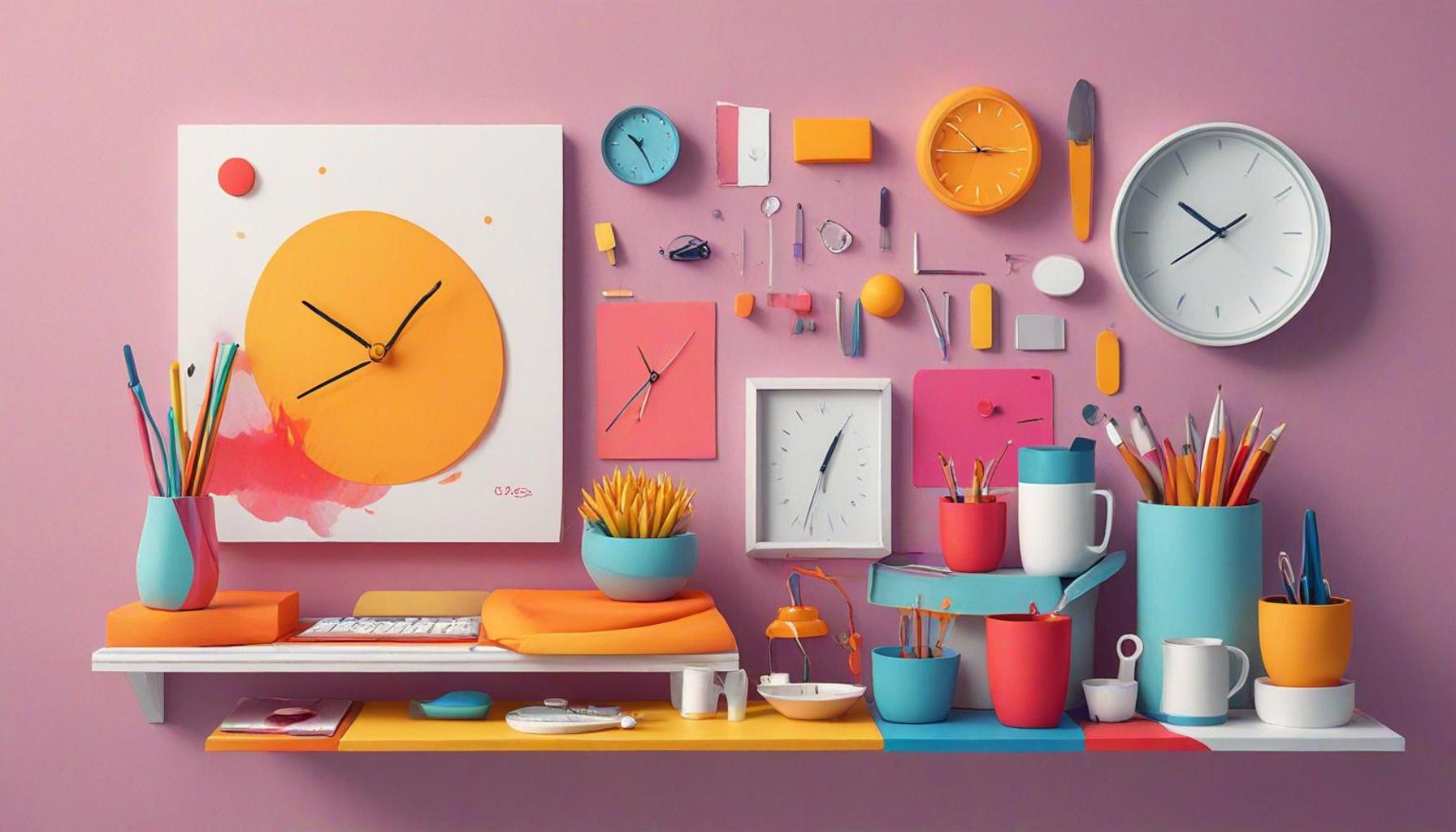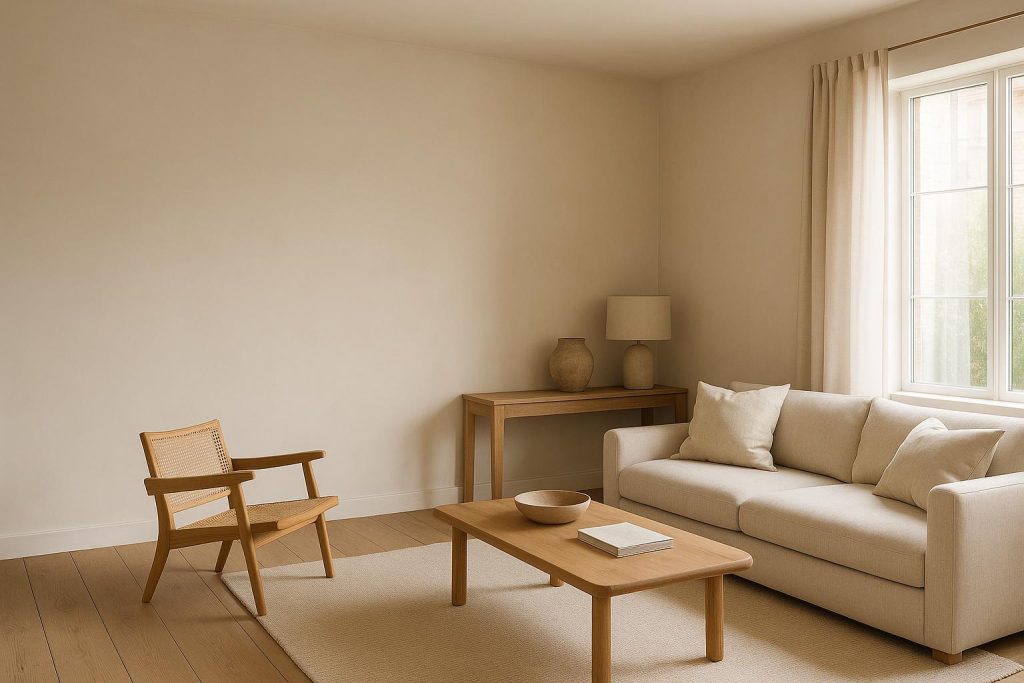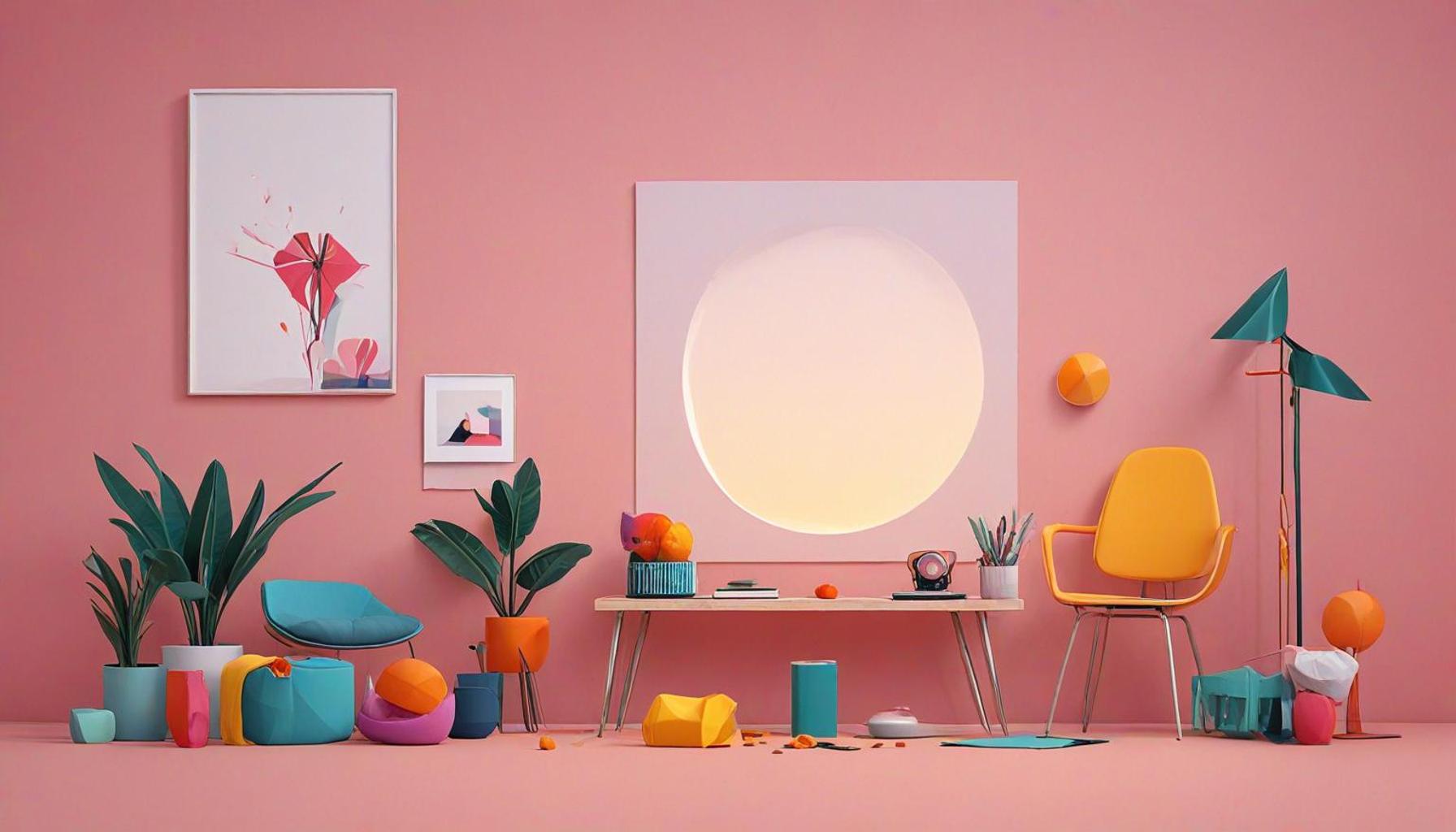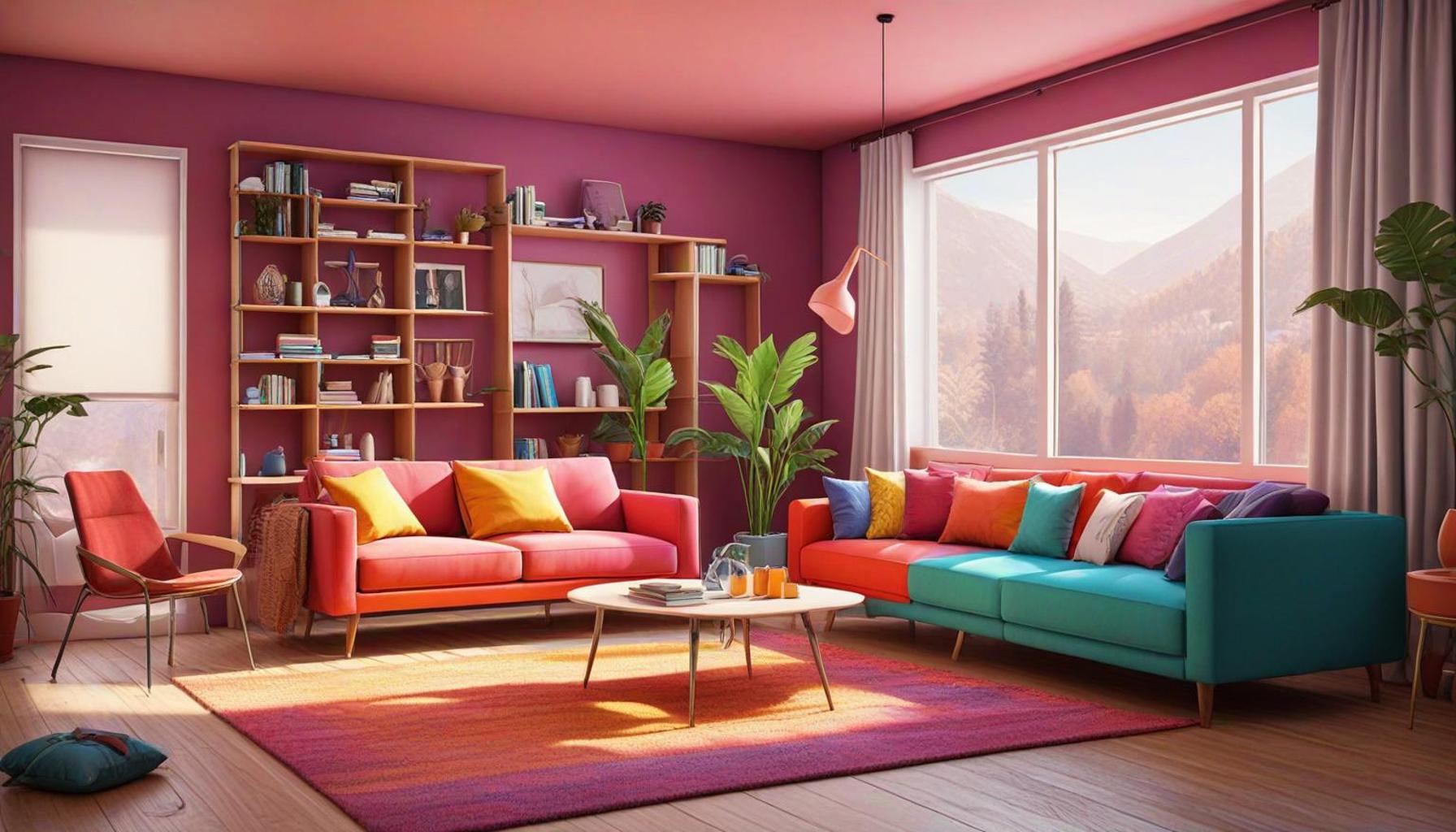Intentional Design: Transforming Daily Routines with Functional Minimalism

Understanding Intentional Design
In a world filled with distractions and excess, intentional design emerges as a beacon for those seeking to simplify their daily lives. By adopting principles of functional minimalism, we can transform our routines into streamlined experiences. This approach not only declutters spaces but also enhances mental clarity, allowing individuals to lead a more meaningful and focused life. With the growing trend of decluttering inspired by figures like Marie Kondo, the relevance of intentional design is more prominent than ever.
The Power of Simplification
Imagine waking up to a calm environment that reflects simplicity and purpose. Intentional design encourages us to prioritize what truly matters, fostering an environment conducive to peace and productivity. Here are key aspects that contribute to this philosophy:
- Decluttering: Removing unnecessary items from our living and working spaces creates a serene atmosphere. For instance, a bedroom devoid of excess decor can serve as a sanctuary for rest and relaxation. By practicing decluttering regularly, individuals can maintain a space that promotes tranquility rather than chaos.
- Functionality: Designing spaces that serve specific purposes ensures that everything has its place. For example, a home office should be equipped with only the tools necessary for work, minimizing interruptions and distractions. An intentional layout can foster a productive environment where tasks become more streamlined.
- Mindfulness: Fostering awareness of our surroundings and daily habits helps us to appreciate the beauty in simplicity. Mindfulness can be cultivated through practices like meditation or dedicated moments of reflection, making us more aware of what we truly need to thrive.
Benefits of Embracing Minimalism
Integrating functional minimalism into our lives offers a plethora of advantages that can significantly enhance our well-being. Consider the following benefits:
- Increased Focus: A simplified space can lead to improved concentration. Research shows that when we reduce visual clutter, our brains have an easier time processing information, ultimately boosting focus and retention.
- Reduced Stress: Clutter-free environments promote tranquility. By eliminating distractions and creating a designated space for relaxation, we enable ourselves to recharge effectively, which is essential for maintaining mental health.
- Enhanced Productivity: A clear path allows for more efficient routines. When our systems are simplified, we can make decisions swiftly, leading to more accomplished tasks in less time. This is especially valuable in fast-paced environments, such as workplaces adhering to agile methodologies.
Exploring intentional design can unlock potential we didn’t know existed. By understanding and implementing its core principles, we can transform mundane routines into fulfilling experiences that inspire joy and clarity. As more individuals in the United States move towards embracing minimalism, it’s worth considering how functional minimalism might be the key to achieving the deliberate lifestyle we desire. Whether you begin with a small corner of your home or reevaluate your entire lifestyle, each step towards intentional design leads you closer to a simpler, more purposeful existence.
DON’T MISS: Click here to discover tips for optimizing your home

Practical Steps to Implement Intentional Design
Adopting intentional design in our lives is not merely about aesthetics; it fundamentally alters how we interact with our environments and routines. Here are some practical steps to incorporate functional minimalism into daily life, effectively transforming mundane tasks into intentional experiences:
Evaluate and Prioritize Your Belongings
The first step in embracing intentional design is evaluating what we own and understanding the significance of each item. Begin by categorizing your belongings into three groups: essential items, useful items, and non-essential items. This process enables you to determine what truly deserves a place in your space. To simplify this process, consider the following questions:
- Do I use this item regularly? If it’s not beneficial to your daily routine, it may be time to let it go.
- Does it bring me joy? Inspired by the minimalist philosophy, if something does not elicit positive emotions, its presence may not be justifiable.
- Is it serving a function? Each item in a functional minimalist approach should have a clear purpose or contribution to your circumstances.
Create Dedicated Spaces
Once you have decluttered, the next logical step is to designate spaces for essential functions. This includes setting up specific areas in your home for work, relaxation, and social activities. Consider how you can create an environment that encourages productivity and tranquility:
- Design your workspace: Choose a location that minimizes distractions and is equipped only with the necessary tools for your tasks, be it a desk, chair, or computer.
- Establish a relaxation corner: Set aside a cozy nook in your home for unwinding, decorated only with soothing elements that promote relaxation, such as plants or comfortable seating.
- Curate social areas: Arrange your living room or dining space to prioritize connection during gatherings. Avoid overcrowding by keeping only essential seating and decor that facilitate interaction.
Streamline Daily Routines
Incorporating functional minimalism into daily routines can drastically improve efficiency. For instance, establishing a morning ritual that includes only necessary activities—such as making the bed, meditating, or preparing a simple breakfast—sets a positive tone for the day. Similarly, dedicating time each week for a reset can help maintain your newly organized spaces.
Moreover, consider how technology can complement a minimalist lifestyle. By utilizing productivity apps, you can manage tasks and simplify decision-making. When technology serves you, it enhances, rather than complicates, your life.
In essence, transforming daily routines is about making intentional design choices that resonate with your values. As we begin to strip away excess and focus on what is essential, we cultivate an environment that is not only functional but also enriching. This transformative process invites a sense of calm and clarity, allowing us to engage with our daily lives with renewed purpose.
Exploring Functional Minimalism in Daily Routines
As we dive deeper into the topic of Intentional Design, it becomes essential to recognize how functional minimalism shapes our daily lives. By focusing on simplicity and purpose, we can streamline our routines and enhance our quality of life. This design philosophy emphasizes the integration of essential elements while eliminating distractions, making our environments more conducive to productivity and mindfulness.Functional minimalism is not solely about the aesthetics of a space; it’s about creating a lifestyle that prioritizes clarity and intent. Implementing this philosophy encourages individuals to evaluate their possessions and habits critically, leading to more pragmatic and beneficial choices. For example, the often-overlooked practice of decluttering not only improves physical spaces but also promotes mental well-being by reducing stress and distractions.Incorporating intentional design into everyday life can manifest in numerous ways, from simplifying workspace layouts to curating minimalist wardrobes that focus on versatility instead of excess. The reward is a harmonious environment that supports creativity and focus. By embracing this approach, we empower ourselves to align our surroundings with our goals and aspirations, paving the way to a fulfilling and balanced life.To better understand the advantages of adopting this transformative design approach, take a look at the informative table below:
| Advantages | Impact on Daily Life |
|---|---|
| Enhanced Focus | Eliminating clutter allows the mind to concentrate better on tasks, leading to increased productivity. |
| Improved Time Management | Less distraction enables more efficient use of time, allowing for a better work-life balance. |
These insights highlight how intentional design and functional minimalism can significantly improve our daily routines and overall well-being. This exploration encourages readers to delve further into the benefits of adopting a minimalist mindset and its potential to transform lives.
DISCOVER MORE: Click here to learn how intentional design can enhance your life
Integrating Intentional Design into Everyday Life
As we continue our journey toward embracing intentional design through functional minimalism, it is essential to understand how these practices can create meaningful and enriching daily experiences. It’s not merely about getting rid of clutter but intentionally crafting our surroundings to promote well-being, focus, and joy.
Adopt the One-In-One-Out Rule
A popular strategy in minimalism is the one-in-one-out rule. This practice encourages mindfulness about new acquisitions: for every new item you bring into your home, an existing item must be eliminated. This principle helps maintain balance and prevents clutter from accumulating. Implementing this rule can be particularly beneficial during seasonal changes or significant life events, such as moving or redecorating.
Mindful Consumption and Sustainable Practices
Intentional design extends beyond our physical objects and into how we consume resources. By adopting a mindful consumption approach, we can make choices that support sustainability and reduce waste. Here’s how:
- Choose quality over quantity: Invest in fewer, high-quality items that are durable and serve multiple purposes rather than numerous cheap products that quickly become disposable.
- Choose local and sustainable brands: Support businesses that prioritize ethical production and practices. Not only does this benefit the environment, but it also fosters community connection.
- Practice mindful grocery shopping: Create a meal plan before shopping and stick to a list to minimize impulse buys. Opt for seasonal and local produce to reduce your carbon footprint.
Reimagining Spaces with Flexibility
Intentional design involves creating spaces that are not only functional but also adaptable to different needs. Consider the following methods for reimagining your environments:
- Multi-functional furniture: Invest in items that can serve various purposes. For instance, a coffee table with storage can help keep living areas organized while functioning as a central social hub.
- Use modular design: Introduce modular storage solutions or tables that can be easily rearranged based on use or occasion, allowing spaces to transform seamlessly throughout the day.
- Embrace digital organization: Beyond physical spaces, consider digital decluttering. Organizing files and managing your online presence mindfully can create a more functional digital workspace, reducing feelings of overwhelm.
Cultivating Mindfulness and Routine
Finally, the essence of functional minimalism lies in promoting a sense of mindfulness within routines. Incorporate mindfulness practices to imbue your tasks with intention. For example:
- Mindful eating: Allocate time for meals without distractions, focusing on flavors, textures, and nourishment. This simple shift can transform meal times into cherished moments of gratitude.
- Mindful clean-up: Turn cleaning into a reflective practice. Focus on the act itself—the motions, sounds, and scents—as a way to ground yourself and cultivate a sense of order.
- Daily reflections: Dedicate a few minutes each evening to reflect on your day. Assess what small changes brought you joy and which items or habits felt superfluous. This practice guides intentional decisions for the following day.
Incorporating these practices into daily life fosters an environment that embodies intentional design. As you see your routines flourish, the possibilities for a more centered and satisfying lifestyle become ever clearer, encouraging exploration and growth in the journey of functional minimalism.
DISCOVER MORE: Click here to enhance your personal organization
Conclusion: The Journey Towards Intentional Living
In a world often characterized by oversaturation and chaos, intentional design through functional minimalism offers a refreshing pathway towards clarity and purpose. By embracing the principles outlined, we cultivate environments and routines that not only serve our practical needs but also enhance our emotional and mental well-being. The shift towards simplicity reveals a profound truth: less can indeed be more.
The practices of mindful consumption, flexible spaces, and daily reflections empower us to make intentional choices that enrich our lives. By applying the one-in-one-out rule, we become guardians of our personal ecosystems, ensuring every item adds value. Adopting multi-functional designs and sustainable practices allows us to align our lifestyles with our values, reducing waste and fostering community connections.
Moreover, integrating mindfulness into our daily routines transforms mundane tasks into opportunities for joy and gratitude. By savoring our meals or reflecting on our days, we anchor ourselves in the present, savoring the richness of everyday experiences.
As we embark on this personal journey of intentional living, we are encouraged to explore the possibilities of a more centered existence. Each small step towards functional minimalism not only simplifies our surroundings but invites a deeper appreciation for what truly matters. With every mindful choice, we pave the way for more liberated lives filled with purpose, focus, and satisfaction. The invitation to transform our daily routines is clear: embrace intentional design as a catalyst for a more fulfilling life.


